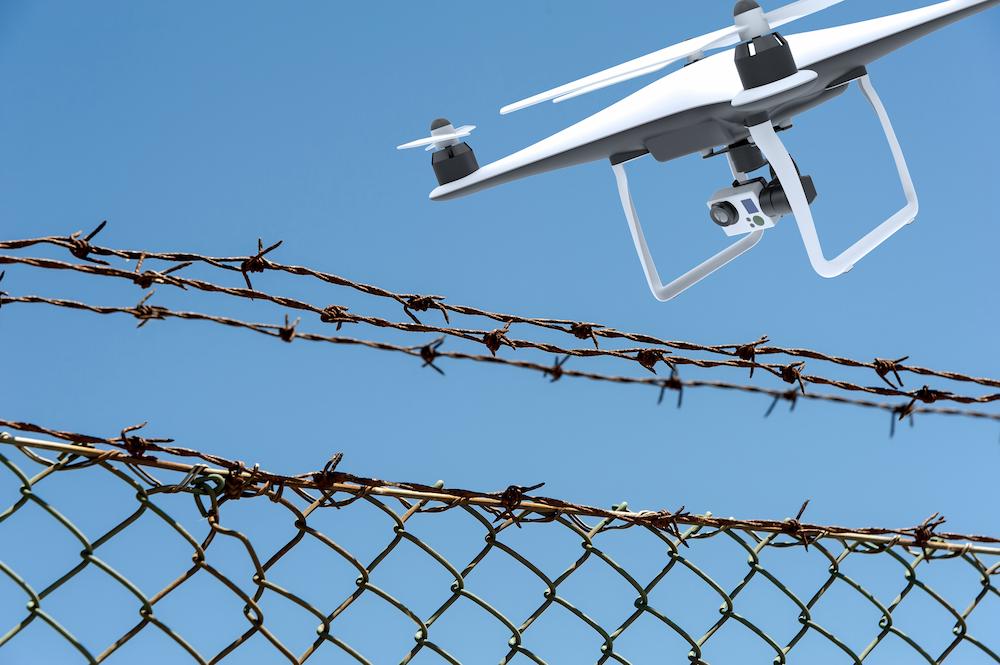In the past decade, commercial drones have proliferated across industries ranging from photography to agriculture. But in a shadowy parallel, drones have also become the most vexing, sophisticated and persistent threat facing correctional facilities across the United States. What began as isolated incidents of small contraband drops has escalated into a crisis involving organized crime, advanced technologies and millions of dollars in illicit goods. This article explores the scale, tactics and consequences of drone incursions in prisons, drawing on exclusive data, expert testimony and real-world case studies derived from a presentation given by Robert Green, Executive Director of the American Correctional Association (ACA) earlier this year at a counter-UAS (uncrewed aircraft system) focused event.
The Scale of the Drone Threat: States Under Siege
Green, a 41-year veteran of corrections, described the drone problem as the most challenging crisis he has witnessed in his career. “In my years of doing this work, I’ve never seen anything more vexing, problematic and in crisis as the drone issue that we’re dealing with in jails and prisons,” he said..
The numbers are staggering. In relation to Georgia’s prisons, from July 2023 to June 2024, there were:
- 434 drone incidents
- 166 drone interceptions
- 151 drone-related arrests
These figures have tripled in recent years. And Georgia is not alone—states across the South and beyond are reporting similar trends, with coordinated criminal networks exploiting gaps in prison security.
In nearby Florida, for example, 16 drone contraband recovery incidents were confirmed or suspected in the past year. Confiscated items ranged from cell phones and tobacco to fentanyl, cocaine and synthetic cannabinoids. The total value of intercepted contraband in one recent period exceeded $7 million and included 130 phones, 25 firearms and 185 pounds of tobacco.
The drone threat is not confined to one region. Besides Georgia and Florida, states reporting significant drone activity include:
- Alabama
- Iowa
- Kentucky
- Louisiana
- Mississippi
- South Carolina
- North Carolina
- Tennessee
- West Virginia
Each state faces unique challenges based on geography, prison design and available resources. Rural locations, where many prisons are situated, often have limited law enforcement response times. This further complicates interdiction efforts.
How Drones Breach Prison Security

Drones have become the delivery vehicle of choice for prison contraband. Early incidents involved small packages of tobacco or marijuana. But, according to Green, today’s drones carry far more dangerous payloads. Recent recoveries include cell phones, chargers, drugs (from fentanyl to ecstasy), communication devices as well as firearms and ammunition.
A single drone can now carry up to 30 pounds of material. In one Florida case, authorities confiscated an agricultural drone with a payload capacity of 230 pounds—enough to transport a human being.
The sophistication of these operations is staggering. Suspects often modify drones with 3D-printed drop mechanisms, fishing lines for precise delivery and even onboard cell phones or Raspberry Pi computers for remote piloting from miles away.
Why the surge in drone drops? The financial incentives are enormous. Operators can earn thousands of dollars from a single delivery. Some investigations have revealed payouts of $6,000 to $10,000 per successful drop. The contraband market inside prisons remains highly lucrative. Offenders perceive the risk as worth the reward. This drives them to orchestrate complex operations, sometimes which involve accomplices both inside and outside the facility.
Organized Crime and Evolving Tactics
Gone are the days when drone incursions were the work of local amateurs. Today, major criminal enterprises and cartels orchestrate these drone deliveries, sometimes earning up to $50,000 per flight. These groups use mobile command centers, train “bad guy fliers” in advanced piloting and evasion techniques and leverage technology to avoid detection and prosecution.
Georgia’s “Operation Skyhawk” exemplifies the scale and sophistication of modern drone crimes at prisons. Law enforcement dismantled a mobile training operation where individuals were taught to retrofit drones, evade detection and conduct drops from significant distances. The operation involved coordinated efforts from the Drug Enforcement Agency (DEA), Federal Bureau of Investigations (FBI) and local sheriffs. It resulted in multiple Racketeer Influenced and Corrupt Organizations Act (RICO) cases against offenders.
The Impact on Prison Operations and Safety
Drone incursions have far-reaching consequences beyond the immediate threat of contraband. They threaten security and undermine the very mission of corrections.
From a security standpoint, the influx of contraband, especially drugs and weapons, fuels the risk of violence inside the facility—both inmate-on-inmate and inmate-on-staff.
Cell phones are also a popular drop item. While they may seem innocuous in terms of contraband, their presence enables inmates to coordinate criminal activities. The risks extend beyond prison walls. Contraband cell phones allow inmates to orchestrate crimes in the community.

Even if a drop is intercepted, it can trigger retaliatory assaults and destabilize the facility. All of these things undermine safety.
Beyond safety impacts, each incident typically triggers a full lockdown of the facility which halts educational, vocational and rehabilitation programs. “You’re shutting down workforce development, education and all the things you really want us to do,” Green explained. Some prisons lose up to 30 productive days per year to lockdowns caused by drone activity, he elaborated.
These program disruptions make it harder for inmates to prepare for successful reentry into society. As Green noted, “92% of everybody you touch goes back to the streets of your home. How you go back matters.”
Why Drones Are So Hard to Stop
Correctional facilities face significant obstacles in combating drone incursions:
- Detection and Mitigation Limits: Most prisons lack the authority or resources to deploy effective drone detection and mitigation systems. Federal regulations restrict the use of certain counter-drone technologies. Even where detection is possible, response times can be hampered by rural locations and limited staff.
- Adaptive Criminals: Offenders quickly adapt to new countermeasures. Some examples include using color-matched packages, multiple simultaneous drops and advanced piloting to evade capture. Some even use drones to create distractions while another drone delivers the real payload.
- Resource Constraints: Correctional budgets are already stretched thin. Some states already spend $30,000 to $79,000 per inmate per year. Investing in high-tech drone defenses is often beyond reach, especially for smaller or rural facilities.
What’s Being Done—and What’s Needed
Some states, like Georgia and Florida, are leading the way with robust detection, surveillance and prosecution efforts. Green explained that multi-agency collaborations, including the use of heat maps, advanced surveillance and aggressive prosecution under RICO statutes, are starting to make a dent in the problem.
However, as noted above, most correctional systems lack the legal authority to actively mitigate drone threats. Advocates are calling for expanded powers for corrections operators to detect, interdict, and neutralize drones before they can deliver contraband. “We need mitigation authority yesterday,” Green emphasized, urging policymakers to provide counter-drone authority for correctional facilities, along with other critical infrastructure owners who deserve the ability to protect their assets, such as airports and power plants.
Green also urged vendors and solution providers to offer transparent, cost-effective solutions tailored to the unique needs of corrections. His message to industry: “Be real honest about what your systems can do and who and how you can help us with detection.”
The Road Ahead: Advocacy and Awareness
The drone threat to prisons has reached crisis proportions, such that urgent action from policymakers, law enforcement and the public is required. As organized crime adapts and technology advances, correctional facilities must be empowered with the tools, authority and resources to defend against airborne contraband.
Awareness is the first step. The public must understand that the safety of correctional staff, inmates and communities is at stake—and that the battle is being fought not just on the ground, but in the skies above our prisons.
Key Takeaways:
- Drone incursions in prisons are increasing at an alarming rate, driven by organized crime and advanced technology.
- Contraband delivered by drones includes drugs, weapons, cell phones, and more, fueling violence and undermining rehabilitation.
- The financial and operational impact is severe, with millions in contraband intercepted and significant disruptions to prison programs.
- The problem is national in scope, affecting states across the country and demanding a coordinated, multi-agency response.
- Legal and technological barriers hinder effective response, and urgent action is needed to grant correctional facilities the authority and resources to counter the threat.

